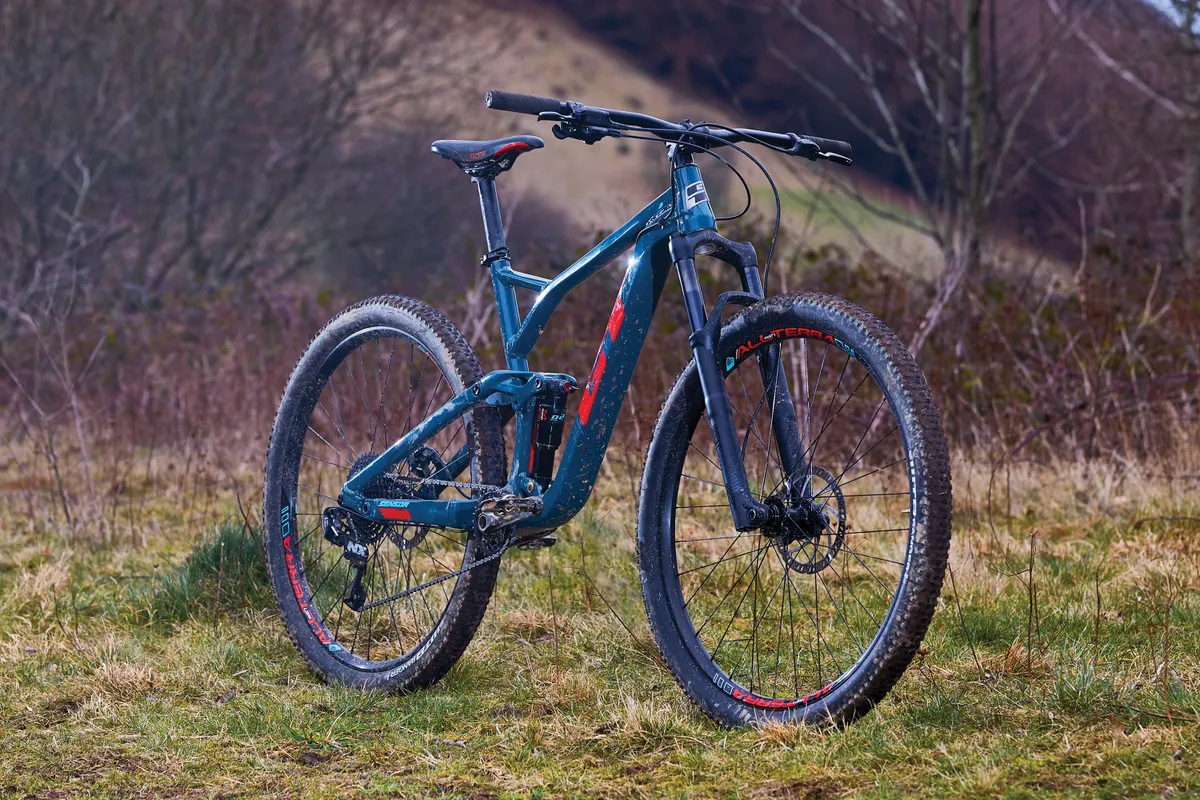GT’s new-for-2018 Sensor is slack and long with adjustable geometry and some well-chosen parts. All this should make this 130mm-travel 29er unbeatable on the trail – but does it?
GT Sensor Alloy Sport frame and kit
The Sensor uses GT’s LTS (Linkage Tuned Suspension) system, which is its take on the classic four-bar Horst link design. Its 470mm reach (large size, low setting), 65.5-degree head angle and 1,222mm wheelbase propel it headlong towards the more extreme end of the trail riding spectrum.
In fact, GT states outright that it’s “designed for the aggressive trail rider”. Which begs the question, why is the bottom bracket (BB) so high, at 349mm in the low setting, with 27mm of drop?
There are plenty of nice frame details, including Boost 148 axle spacing, a tapered steerer tube, a threaded BB shell and ISCG-05 tabs. It’s set up to use one of the latest metric-length trunnion shocks too.
The cables are externally routed, although there is a port for an internally-routed dropper.

A dropper post is the one notable omission on the Alloy Sport. Most of the rest of the spec is spot on for the price. The only letdown is the tyres.
For a bike that shouts about being extreme, it’s surprising to see XC rubber fitted, in the form of 2.25in WTB Rangers.
GT Sensor Alloy Sport ride impressions
Unfortunately, the tyres are the first thing about the bike you’ll notice, especially if it’s wet, muddy, greasy or you’re riding anything other than dry hardpack – so that’s 90 percent of the time in the UK.
The lack of side knobs or braking ramps means that outright grip is a rare commodity. This is unfortunate, because the frame and suspension have plenty of in-built compliance that translates to moments of brilliance on the trail.
When climbing, the Sensor offers an adequate amount of support to resist high-cadence pedal bob, although violent crankers may need to use the lockout lever on the shock.
The steep 76-degree seat angle means you shouldn’t have to push your saddle too far forward to find the sweet spot. I didn’t feel that the slack head angle or long wheelbase compromised its climbing performance, and the 1x drivetrain has enough gears to get you to the top despite the bike’s 15.69kg weight.

Heading downhill, the GT has a split personality. The high BB doesn’t go unnoticed, especially when you’re hitting back-to-back berms or corners in quick succession, where the bike has a tendency to feel stood up in the middle of the turn, rather than flowing from one to the next.
To reduce the BB height and improve the GT’s cornering, I tried running the rear shock with a bit more sag than usual, while simultaneously increasing the fork pressure to help prop the front end up. Unfortunately, this turned the bike into a bit of a wallowing, chopper-like mess, making it harder still to ride with the confidence that the rest of the geometry should encourage.
I eventually settled on running the recommended (or firmer) suspension pressures and adapting my riding style to compensate for the bike’s handling quirks.
On paper, the slack and long geometry should mean it rides with the utmost composure, so it’s disappointing that it struggles in the turns.
Head out on more technical or straighter tracks though, and the issues generated by the high BB vanish. The suspension, general feel of the bike and the components (bar the tyres) combine to provide a capable and solid-feeling platform when it’s steep, techy or flat-out fast. Just make sure you’re ready to take on the corners with a little more consideration.
The Sensor’s got potential, but swapping the tyres is a must, as is fitting a dropper. These changes would add a couple of hundred quid to the price, but would move the GT up to the next level of performance.

GT Sensor Alloy Sport geometry (L)
- Seat angle: 76 degrees
- Head angle: 65.5 degrees
- Chainstay: 17.13in / 43.5cm
- Seat tube: 18.9 / 48cm
- Top tube: 24.41in / 62cm
- Bottom bracket height: 13.74in / 34.9cm
- Wheelbase: 48.11in / 1,222mm
- Reach: 18.5in / 47cm
Product
| Brand | Gt |
| Price | A$2999.00, £1600.00, $1900.00 |
| Weight | 15.69kg |
Features
| Fork | RockShox Recon RL, 130mm (5.1in) travel |
| Stem | All Terra 3D Forged, 40mm |
| Chain | SRAM CN-1110 |
| Frame | Aluminium alloy, 130mm (5.1in) travel |
| Tyres | WTB Ranger Comp DNA 29x2.25in |
| Brakes | Tektro M285, 180mm |
| Cranks | All Terra Charm, 30t |
| Saddle | WTB Silverado Sport |
| Wheels | Alex MD27 rims on All Terra hubs |
| Headset | FSA Orbit C-40-B |
| Shifter | SRAM NX |
| Cassette | SunRace, 11-42t |
| Seatpost | All Terra |
| Grips/tape | GT push-on |
| Handlebar | All Terra, 780mm |
| Rear shock | X-Fusion O2 Pro RL |
| Bottom bracket | Sealed bearing |
| Available sizes | XS, S, M, L, XL |
| Rear derailleur | SRAM NX (1x11) |
